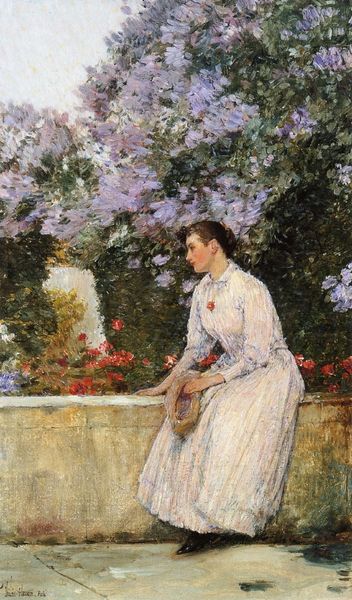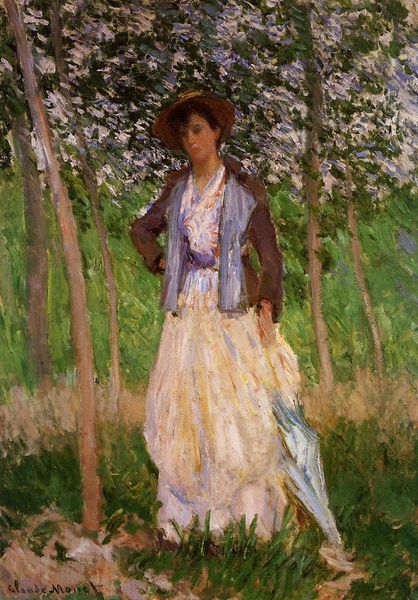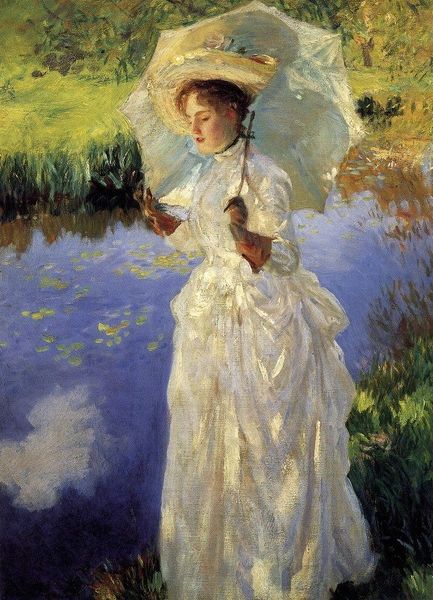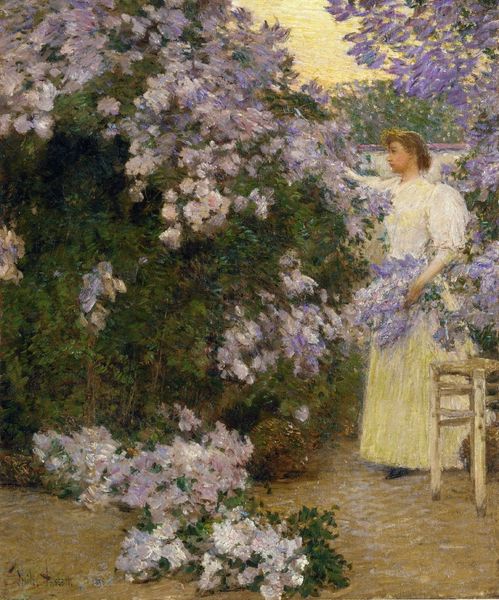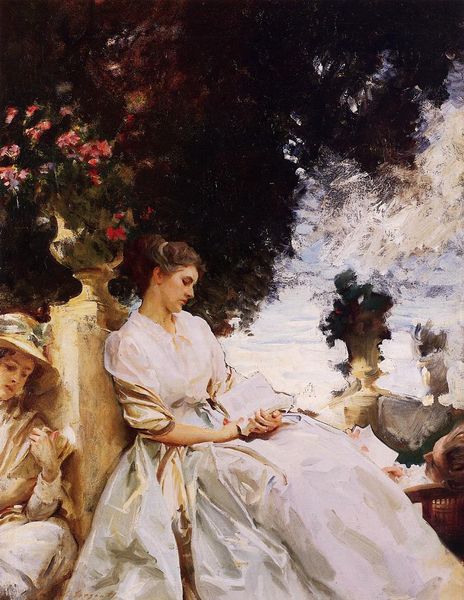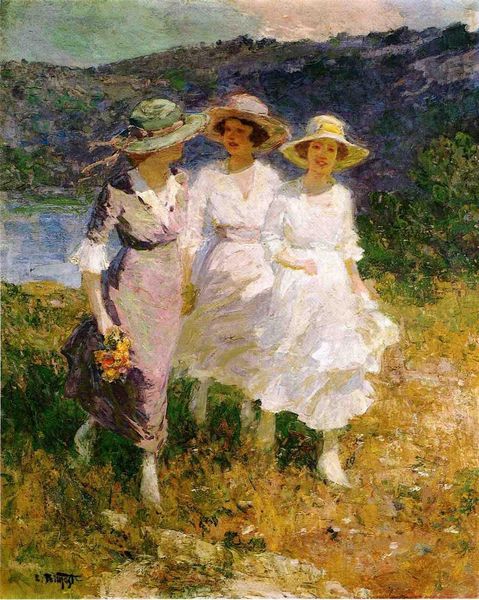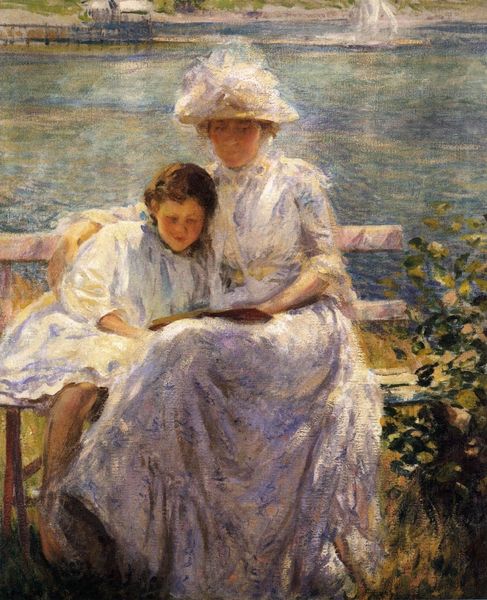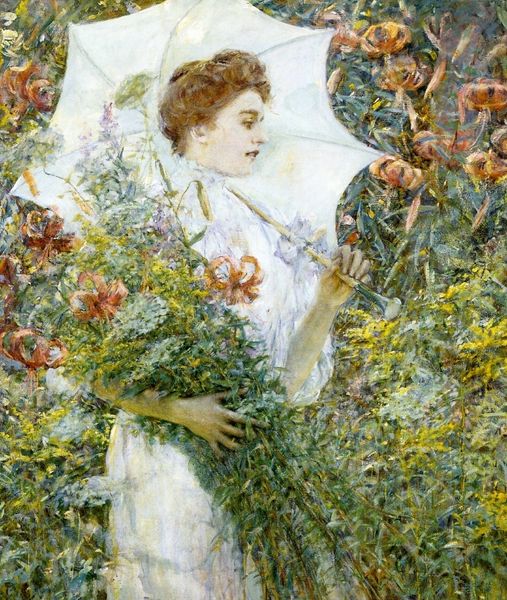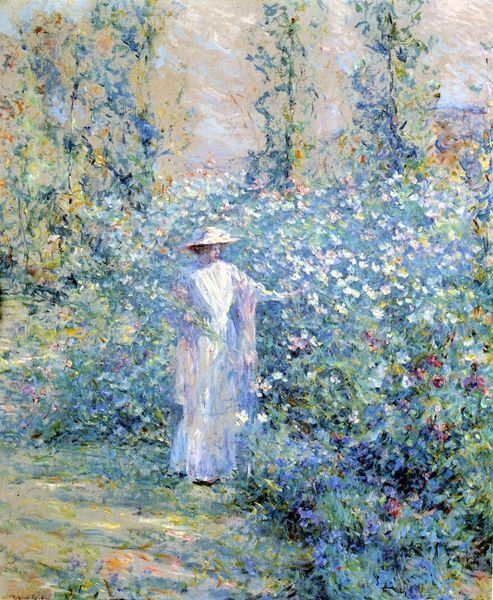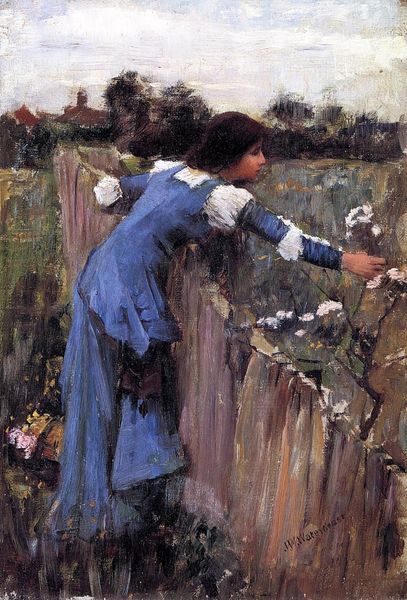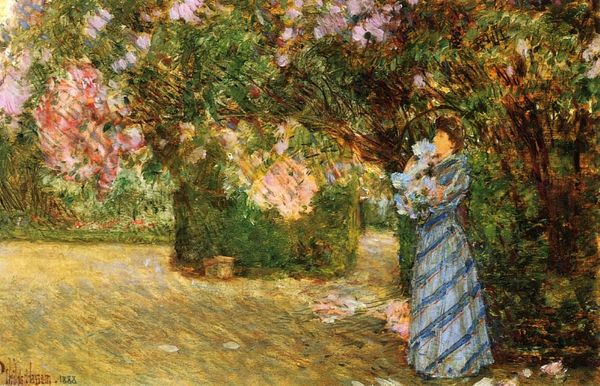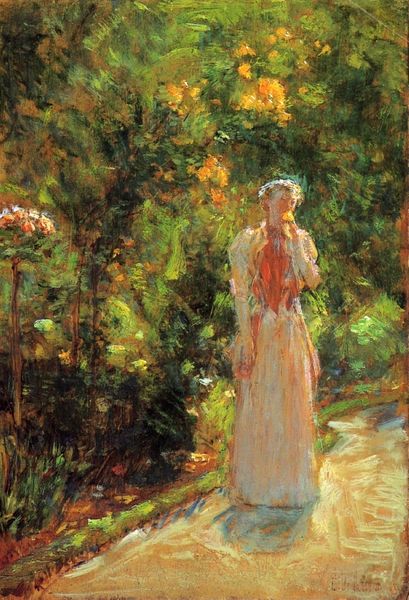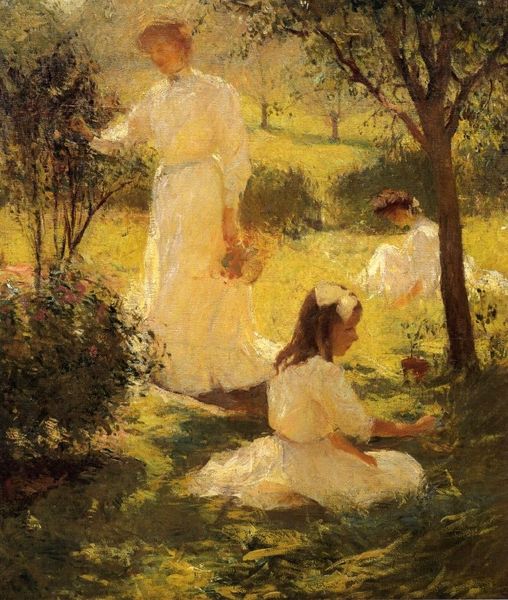
Copyright: Public Domain: Artvee
Editor: This is "Springtime" painted by James Jebusa Shannon in 1896. The medium is oil on canvas. The mood is gentle; it’s easy to imagine this couple pausing to admire nature. How do you interpret this painting? Curator: I see a powerful representation of late 19th-century societal ideals. The figures, bathed in light and surrounded by blossoms, evoke themes of innocence and renewal associated with springtime. But consider the social context: What roles were expected of men and women? The man's protective stance and the woman's demure posture reflect the prevailing gender dynamics and the romantic idealization of women in art during this period. How does the artist use light to reinforce these notions? Editor: I guess the soft light kind of idealizes the scene? Is the setting a factor here too? Curator: Absolutely. The idyllic landscape and Impressionistic style can be viewed as a retreat from the rapid industrialization and urbanization occurring at the time. Artists like Shannon created these kinds of images to offer viewers an escape into a more pastoral, perhaps imagined, past. The public consumption of art becomes a commentary on a changing world. What do you think of the use of color in creating this effect? Editor: It definitely softens the world depicted, making it more dream-like and less grounded in reality. Thinking about the intended audience explains a lot of the symbolism here. Curator: Exactly. Understanding the socio-political undercurrents allows us to read "Springtime" not just as a beautiful scene but as a constructed representation shaped by specific cultural forces and power dynamics. It helps us to analyze why particular imagery became prominent. Editor: This makes me see that what an artwork represents depends so much on what was happening then. Thanks for pointing that out!
Comments
No comments
Be the first to comment and join the conversation on the ultimate creative platform.
